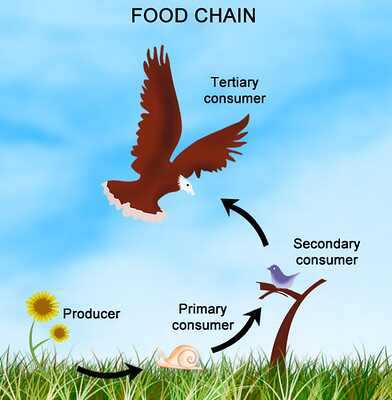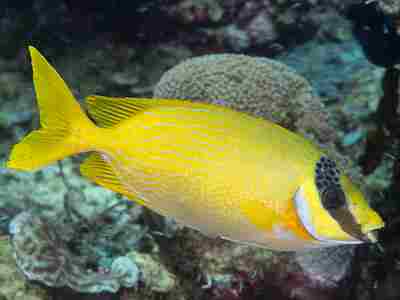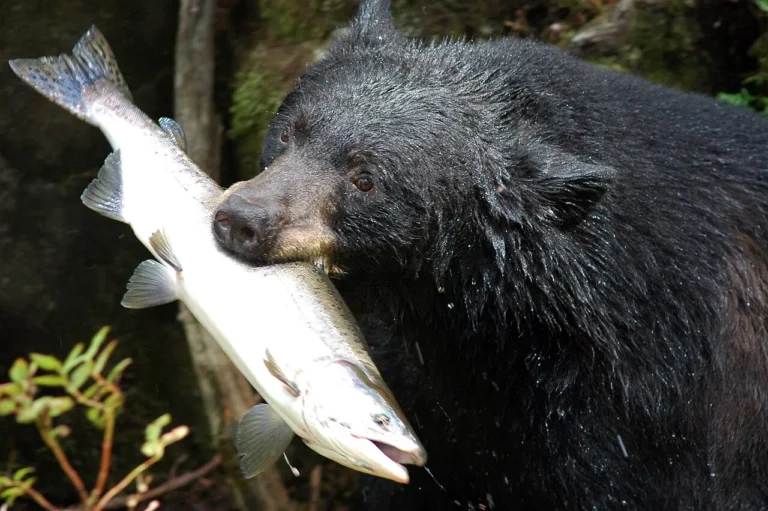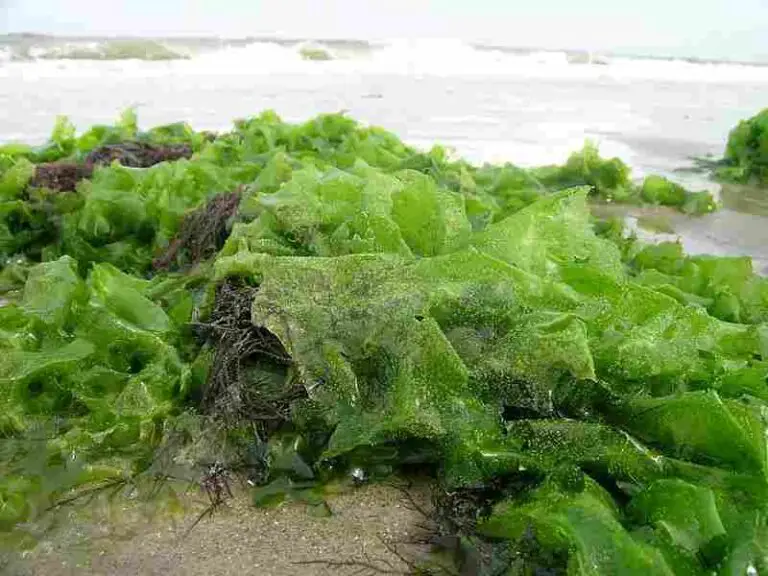Food Chain With 4 Trophic Levels Explained
A food chain with 4 trophic levels comprises of; producers (level 1), primary consumers (level 2), secondary consumers (level 3), and tertiary consumers (level 4).
This article discusses four trophic levels of a typical food chain, as follows;
1). Level One (1): Producers (in explanation of a Food Chain with 4 Trophic Levels)
A producer in a food chain is any organism that is responsible for producing its own food, and serving as a basic source of bioenergy for other organisms in the ecosystem.
Producers occupy the lowest trophic level (or 'level 1') of the food chain and energy pyramid, so that they can be considered the starting point of biomass, food and energy supply [1].
The organisms identified as producers, are generally capable of manufacturing food using inorganic materials like carbon dioxide (CO2), water; by converting these materials to chemical energy and biomass through a solar energy-driven biochemical process, called photosynthesis.
Producers play a key role as carbon sinks in the ecosystem, due to their ability to capture and store atmospheric carbon dioxide through photosynthesis and carbon sequestration. This role makes them important as a tool for mitigating global warming and climate change.
Examples of primary producers in a food chain are; algae, bacteria, and algae. They are called autotrophs for their food-manufacturing characteristic, and may occur as terrestrial plants or aquatic chlorophyllous organisms.

Components of a Food Chain with 4 Trophic Levels: Producers (Credit: U.S. Navy 2005)
2). Level Two (2): Primary Consumers
A primary consumer is any organism that depends directly and solely on primary producers for food, in an ecosystem.
The primary consumers occupy trophic level two (2) in a food chain, and are heterotrophic, being unable to manufacture their own food.
Primary consumers are limited in their food sources, which include only autotrophs like plants and algae, so that most of them (especially in terrestrial biomes) can be described as herbivores [2].
Examples of primary consumers are; deer, sheep, rabbit, grasshopper, prairie dog, caterpillar, and zooplankton. These organisms are relatively abundant in most ecosystems including grasslands, forests, and oceans.
3). Level Three (3): Secondary Consumers (in explanation of a Food Chain with 4 Trophic Levels)
The trophic level of secondary consumers is level three (3) in a typical food chain or ecologic pyramid.
This level is directly above the primary consumers in trophic level 2, so that secondary consumers survive using energy that is transferred to them (through feeding) by these primary consumers.
Since primary consumers themselves depend directly on producers (plants, algae) for food, if can be said that secondary consumers depend indirectly on producers for their survival.
In the food chain, secondary consumers feed mostly on primary consumers, meaning that they are mostly carnivorous and heterotrophic.
Many secondary consumers also exhibit omnivorous feeding habits, so that they can feed on both producers and primary consumers. This is especially the case in systems where primary consumers not sufficient or readily available to meet the nutritional needs of the secondary consumers.
Examples of secondary consumers are; insectivorous plants, small fish, snakes, foxes and owls.
It must be noted that the classification of any organism as a secondary consumer depends on the conditions and occupants of the ecosystem. In some ecosystems, wolves may be classified as secondary consumers, while owls may be tertiary consumers in other ecosystems.

Components of a Food Chain with 4 Trophic Levels: Secondary Consumers (Credit: William H. Majoros 2011 .CC BY-SA 3.0.)
4). Level Four (4): Tertiary Consumers
The trophic level pf a tertiary consumer in a food chain is level four (4), which occurs directly above the secondary consumers of level three.
Tertiary consumers are often also referred to as 'Apex Predators' although in some food chains, there is a fifth trophic level for the apex predators or quaternary consumers. Such additional levels only occur when analyzing highly complex and/or populated ecosystems.
The type of food consumed by a tertiary consumer is a combination of autotrophic and heterotrophic biomass, meaning that tertiary consumers can be either carnivorous or omnivorous in their dietary habits.
Tertiary consumers are generally capable of feeding on organisms from all three lower levels, including producers, primary consumers and secondary consumers.
Examples of tertiary consumers in a food chain are; crocodiles, sharks, bears, lions, pythons and eagles. These organisms share the characteristic of being large predators relative to other organisms within their ecologic scope of interaction.
Level four is the trophic level that has the least amount of energy in a food chain; with approximately 1/1000th the amount of energy of producers in the first trophic level.
This is explained by the loss of 90% of energy in every trophic level as a result of metabolic processes, so that only about 10% is successfully transferred to the overlying level.

Conclusion
A food chain with 4 trophic levels is made up of;
1. Level One (1): Producers
2. Level Two (2): Primary Consumers
3. Level Three (3): Secondary Consumers
4. Level Four (4): Tertiary Consumers
References
1). Hui, D. (2012). "Food Web: Concept and Applications." Nature Education Knowledge 3(12):6. Available at: https://www.nature.com/scitable/knowledge/library/food-web-concept-and-applications-84077181/. (Accessed 27 February 2023).
2). King, D. (2019). "What Are the Trophic Levels in Our Ecosystem?" Available at: https://sciencing.com/trophic-levels-ecosystem-8205653.html. (Accessed 27 February 2023).



